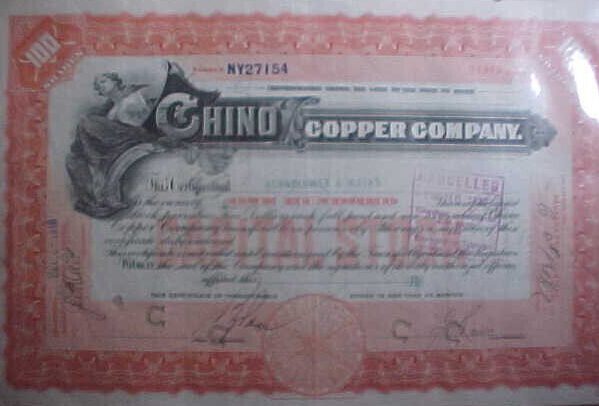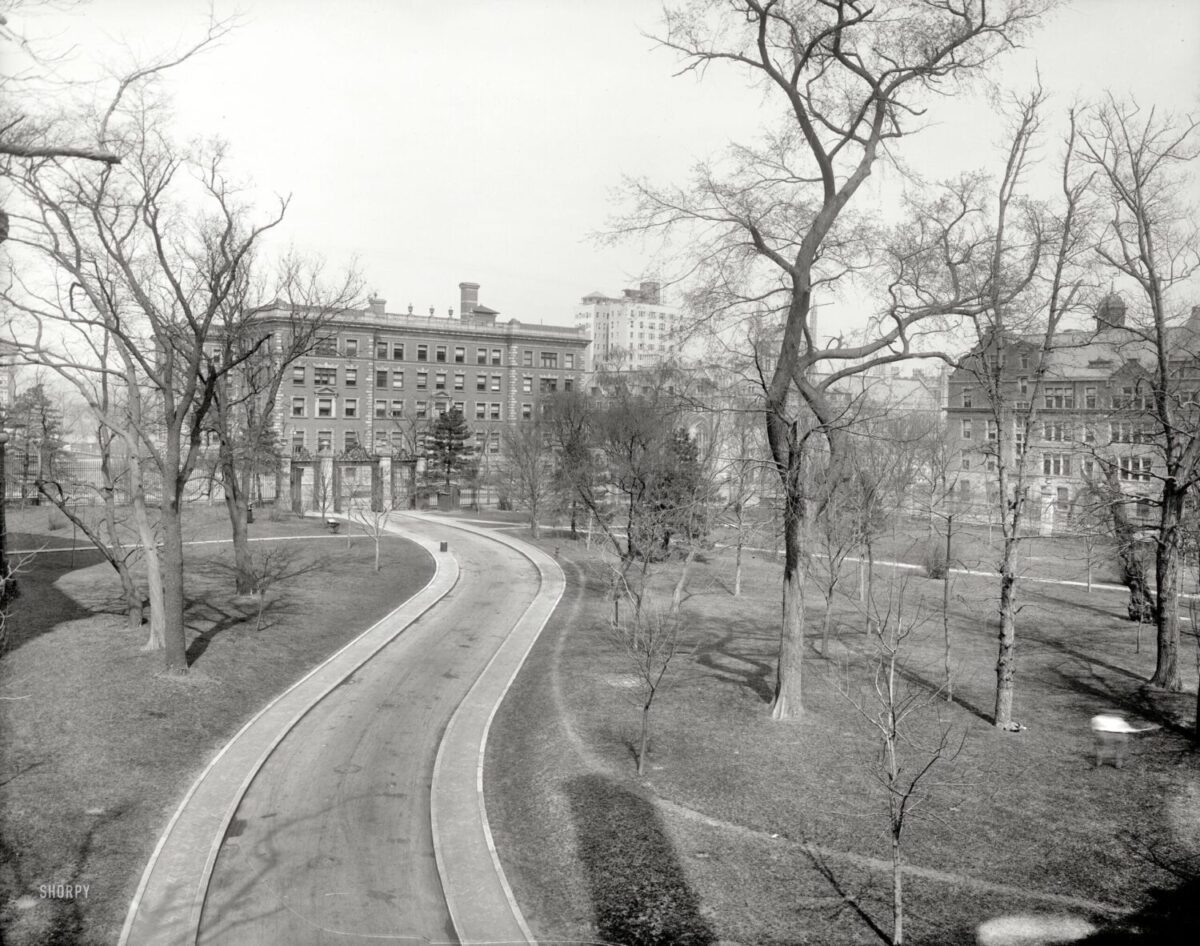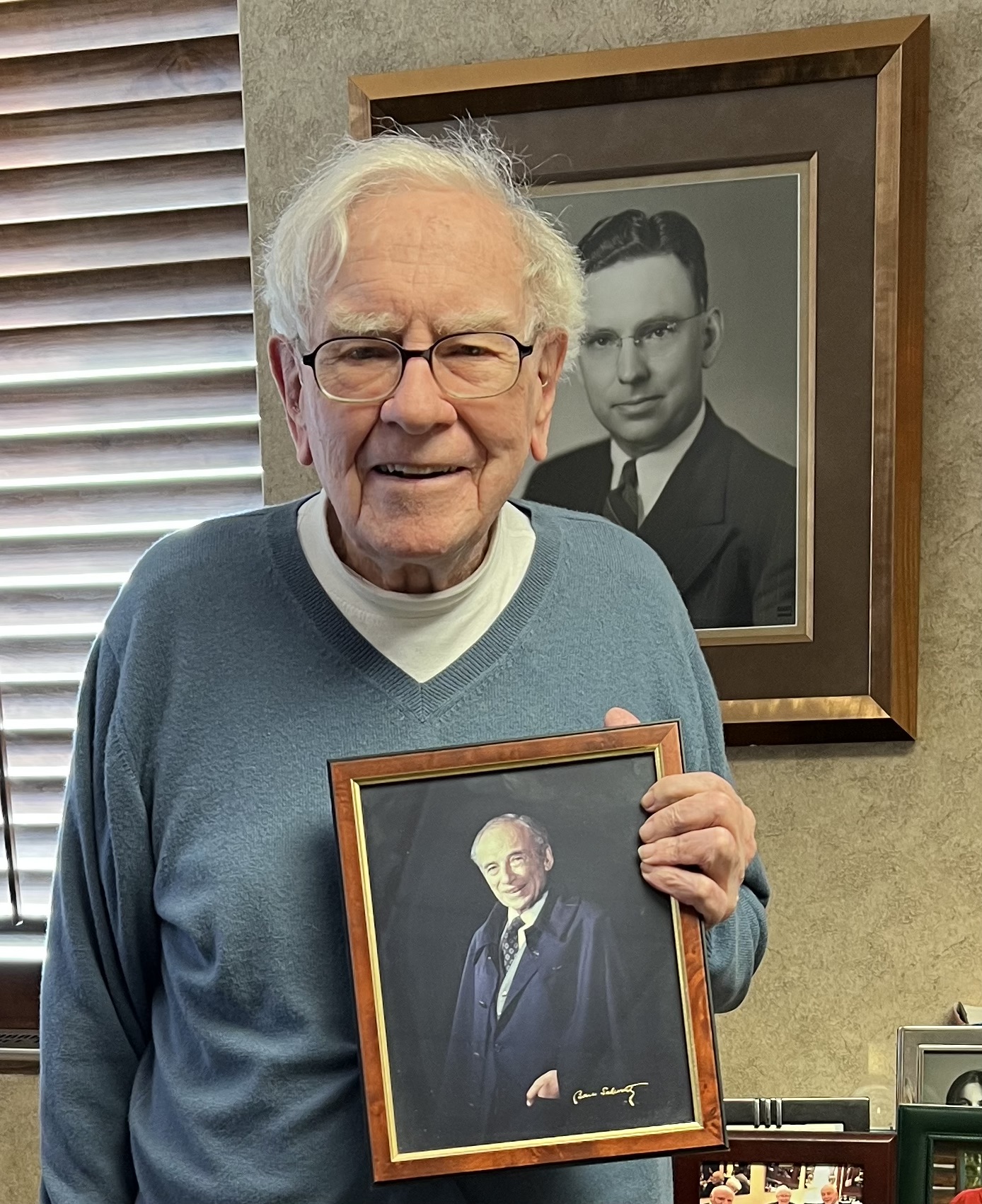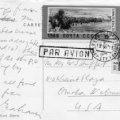Imagine Benjamin Graham at that exhilarating moment where we last left him—the moment when a rival firm offered him a dream job. Had he earned his degree at Columbia in three years, working eight-hour evening shifts yet graduating second in his class, only to wind up a bumbling bond salesman on Wall Street? How long would he have to keep struggling to make ends meet? Would he ever make a high enough salary to support his mother and marry my grandmother, Hazel?
He’d just written his very first analysis of a security—that is, a tradeable financial asset such as a stock or bond. This analysis of Missouri Pacific Railroad (MoPac) bonds assessed MoPac’s year-end report and concluded that the company was in such poor financial health that investors should sell MoPac’s bonds, or better yet, avoid investing in them entirely.
Ben’s colleague, Richard Willstater, showed his analysis to a partner at J.S. Bache, and the firm offered Ben a position in their statistical department at $18 per week. In his autobiography, Benjamin Graham: The Memoirs of the Dean of Wall Street, Ben admits that at the time he was working in the bonds department at Newburger, Henderson & Loeb, earning $12 per week while failing to sell a single bond. What a terrific opportunity! How did he respond to this attractive offer?
“I was quite sure that N.H.&L. would be glad to get rid of me, since I brought in absolutely no bond sale commissions to offset my $12 per week emolument. But when I rather airily announced to Mr. Samuel Newburger my decision to change jobs, the result was quite contrary to what I had expected.”
Mr. Newburger declared that Newburger, Henderson & Loeb would not let another brokerage firm steal Ben away. Clearly, he didn’t want to let Ben go. Was Newburger just shorthanded, or did he have a high opinion of Ben? Ben confessed that he wasn’t cut out to be a bond salesman. He pored over railroad financial reports and studied Lawrence Chamberlain’s definitive The Principles of Bond Investment, but when the firm sent him out to a businessman’s office to make a sales pitch, that businessman invariably responded with a polite “No, thank you.” I like the way Ben was honest with his boss and with himself. I remember my affable Grandpa Ben, and picture him as an affable young man. I can’t fathom why he never sold any bonds.
Ben used his poor sales record to make the case that he would be more successful at statistical work. In the 1910s, a Wall Street man who studied financial publications with the intent of determining whether a stock or bond was a good investment was called a “statistician.” For example, Edward Davis Jones—the “Jones” in the Dow Jones Industrial Average—was known as a statistician.
It makes me happy to see Ben follow his lodestar, steering his career toward utilizing his unique abilities as a thinker and mathematical marvel.
“‘That’s fine,’[Mr. Newburger replied.] ‘It’s time we had a statistical department here. You can be it.’”
How fortunate that Mr. Newburger saw the potential in Ben.
Watershed Moment
This proved to be a turning point in my grandfather’s life. Benjamin Graham had analyzed one railroad and discovered he had a talent for navigating a largely uncharted realm—the realm of financial statistics.
Did Benjamin Graham sense that he would be the groundbreaking explorer of that realm? That by melding his creativity and mathematical wizardry, he would make a lasting contribution to finance? I’m awed that, a century later, the financial world still honors him as the founder of financial analysis as a profession and the inventor of security analysis.
Ben agreed to stay at N.H.&L. He awaited his bosses’ decision about his new salary.
“After a firm meeting, it was decided to raise my wage to $15 per week—it was unreasonable for me to expect them to pay more, considering their previous unproductive investment in me…I was glad to settle at their price and begin my real and definitive career as a security analyst.”
Benjamin Graham had endured the uncertainty of Wall Street’s sudden closure in the face of worldwide panic two months after he joined the firm. When trading resumed, he had dashed around the financial district at his bosses’ bidding, delivering stock certificates and picking up checks in his role as “runner.” He had scrawled stock prices on a board, adding fractions he kept in a heavy belt in order to display a share price of, say, $23 9/16 in his capacity as “board boy.” He expressed not one iota of vexation at being assigned these unskilled jobs—jobs that required far less brain power and paid him far lower wages than the jobs he’d held as a student working his way through college.
Nor did he express one word of complaint, in his Memoirs, that after he putting in full days on Wall Street, he had to work evenings as a tutor and English teacher to support his mother and make ends meet. Just as when Ben was a boy and teenager, earning money took precedence over everything else—over what we call “work-life balance” today, over sleep, over recreation, over any kind of social life, except on weekends when he sometimes visited his fiancée, Hazel.
At last, a compelling new role had presented itself—a role that gave Ben the chance to apply his brilliance to the task. A role that paid him a bit more, too.
Ben Graham Suffered Regret
Soon after this milestone, Ben caught sight of Richard Willstater—the “benefactor” who made his promotion to statistician possible—on the street and turned away to avoid saying hello. Why? He felt guilty for not visiting Richard after he moved his office from Ben’s firm to a new address. The next time they met on the street, Willstater rebuked Ben for his discourtesy.
“I felt heartily ashamed of myself and confessed it freely; which he took in good part. I think that little incident taught me something. If you have failed in your duty towards someone, there is a natural tendency to dissociate yourself from him—which hurts him still more. Fair and friendly dealing requires you confess and repair your fault at the very first opportunity.”
I’m struck by Ben’s recall of this incident, written fifty years after it took place. His experience teaches me something, too. I tend to think that success insulates people from suffering, even from their own mistakes. Ben’s expression of shame and remorse strikes a tender chord in me. He reminds me of our common humanity, our vulnerability. We all do things we regret and find it hard to make amends. I feel a welling of affection for the sensitive heart that beat behind the wall Ben built to protect himself from hurt.
Benjamin Graham’s Big Break: The Guggenheim Exploration Company

Kennecott Mill Town, a self-contained company town, where copper ore was processed and shipped out on trains, circa 1915. Daniel Guggenheim made the Kennecott mine in Alaska a huge success. Courtesy of nsp.gov/wrst.
The Guggenheims were a wealthy Jewish family who amassed a mining fortune before they became renowned as founders of museums in New York City; Venice, Italy; and Bilbao, Spain. Late in August of 1915, Ben learned that the Guggenheim family planned to dissolve the Guggenheim Exploration Company, a mining conglomerate, and distribute the company’s assets to its shareholders. In his new role as statistician, Benjamin Graham did some astute number crunching based on values of the Guggenheims’ copper mines that were actively traded on the New York Stock Exchange.
“I calculated that the current market value of the various pieces together would be appreciably higher than the price of Guggenheim shares.”

American Smelting and Refining Company (ASARCO) copper plant owned by the Guggenheim family, in Tacoma, WA. Nearly 100 years of operation caused lead, arsenic and other heavy metals to pollute the soil of the Puget Sound basin.
Ben’s Calculations
In a paper titled “Benjamin Graham: The Father of Financial Analysis,” published by the Financial Analysts Research Foundation in 1977, authors Irving Kahn and Robert Milne detail Ben Graham’s calculations as follows:
“Market Value on September 1, 1915:
1 share Guggenheim Exploration $68.88
Equivalent Securities Held:
.7277 share Kennecott Copper @ 52.50 = $38.20
.1172 share Chino Copper @ 46.00 = $5.39
.0833 share Amer. Smelting @ 81. 75 = $6.81
.185 share Ray Cons. Copper @ 22.88 = $4.23
Other Assets = $21.20
Total $76.23
Ben compared the value of one share of Guggenheim Exploration with its equivalent in shares of the underlying copper companies that the Guggenheims owned and planned to retain. Subtracting the lower number market value from the higher, he found the potential for $7.35 profit per share of Guggenheim Exploration.

Letterhead of Guggenheim Exploration Company, October 5, 1906. Courtesy of MiningUtah.com
“Thus, there was a practically assured arbitrage profit by buying shares of Guggenheim and simultaneously selling shares of Chino [Chino Copper Mine], Nevada [company unknown], Ray [Ray Consolidated Copper], and Utah [Kennecott Mine].”
What Does Ben Graham Mean by “Arbitrage Profit”?
In his stock market Bible, The Intelligent Investor, which Warren Buffet called “by far the best book on investing ever written,” Graham gives this definition:
“Arbitrages: The purchase of a security and the simultaneous sale of one or more other securities into which it was to be exchanged under a plan of reorganization, merger or the like.”
Investors reap rewards from a temporary difference in share cost, such as might occur when a company dissolves and reorganizes.
I notice that Ben Graham says the profit was “practically assured.” Ben was twenty-one years old. He had worked at the brokerage firm of Newburger, Henderson & Loeb for fourteen months, including four months in which the New York Stock Exchange was closed. A year on Wall Street had taught him that no investment is risk-free. I enjoy the way he looks the risks straight in the eye and reels off their names like a knight defying his dragons:
“The possible risks lay [in] 1) failure of stockholders to approve the dissolution, 2) litigation or other trouble occasioning a protracted delay, [and] 3) difficulty in maintaining a short position in the shares sold until they were actually distributed to the Guggenheim shareholders.”
Sword in hand, Ben declares:
“None of these risks appeared substantial to me.”
He was so confident of this opportunity to make a good profit that he recommended the arbitrage operation to his firm. His bosses decided to follow the advice of this young upstart, whom they’d recently ordered about as a runner and board boy. A colleague in his office, Harold Rouse, offered Ben twenty percent of the profits if Ben would manage the arbitrage operation for him as a private investor. Ben agreed. Before we find out whether they made their $7.35 profit per share, let’s examine the risks Ben faced.
Risk 1: Would the Stockholders Approve the Dissolution?

This New York Times story details the Guggenheim Exploration Company’s plan to dissolve the company and divide its assets among the shareholders. The article appeared in the New York Times on November 24, 1915.
While researching the subject, I was surprised to find this story in The New York Times, published on November 24, 1915, regarding the dissolution of the Guggenheim Exploration Company. Why surprised? I hadn’t expected this matter to be public and newsworthy. I liked that the article confirmed some aspects of the upcoming dissolution of the Guggenheim Exploration Company that Ben and other authors mentioned. My mind boggled at the transactions involving large sums of money and shares.
The article details a letter that the Guggenheim Exploration Company sent to its stockholders. Nowhere does it mention that the stockholders could approve or disapprove the dissolution. Had they already approved it? Bear in mind that the New York Times published this article nearly three months after Ben made the calculations quoted above. Amazingly, the .7277 share of a Kennecott share remained the same and appears in the article. No other values are mentioned.
Risk 2: Would Any Trouble Cause a Protracted Delay?
According to Kahn, Ben made his initial calculations on September 1, 1915, and the dissolution went through on January 17, 1916—four and a half months later. If Kahn had his dates right, that certainly qualifies as a protracted delay. Ben gives no indication that the delay caused any trouble. Kahn became a teaching assistant of Ben’s at Columbia Business School and helped to prepare analytical material for Ben’s iconic book Security Analysis, so he had sufficient personal contact with Ben to be accurate.
Risk 3: Difficulty in Maintaining a Short Position in the Shares Sold Until Guggenheim Dissolved
Here’s where Ben Graham’s arbitrage operation gets complicated. Ben said he intended to buy shares of Guggenheim Exploration and simultaneously sell shares of the individual copper mines. But to complete the arbitrage operation, he had to wait months for the dissolution of Guggenheim Exploration to go through. Oy vey, the plot thickens. I have to surmise that he didn’t buy and sell the shares on the same day. Some kind of “selling short” or “shorting” was likely involved. Distinguished Wall Street Journal writer Jason Zweig’s footnote in Graham’s 2006 revised edition of The Intelligent Investor says: “In ‘selling short’ (or ‘shorting’) a stock, you make a bet that its share price will go down, not up.”
Ben Made Everyone Happy
Without detailing how he did the shorting—or how he overcame any difficulties in “maintaining a short position” during the long wait—Ben tells us that the arbitrage operation succeeded exactly as hoped.
“The dissolution plan went through without a hitch; the profit was realized exactly as calculated; and everyone was happy, not least myself.”
As a result, according to Kahn and Milne, “Ben’s reputation and his net worth both grew.” Ben Graham calls this period from 1915 to 1916 “the big bull market of World War I,” when war orders from France and England caused stock prices to advance to “unprecedented levels.” As Ben’s firm prospered, Ben expanded his role.
A Deepening Sense of Value Investing?
The legendary Benjamin Graham himself, his disciple Irving Kahn, and other prominent investors and authors wrote about Ben Graham’s Guggenheim Exploration arbitrage operation—from vastly different perspectives. In an article titled “Benjamin Graham’s First Trade,” financial journalist Rupert Hargreaves calls Guggenheim arbitrage “the legendary investor’s first attempt at value investing.” Value investing involves buying undervalued stocks—stocks that, according to careful analysis, are priced lower than they’re worth—and holding them until their share price rises to reflect their real value. In Forbes Greatest Investing Stories, the late Forbes contributing editor Richard Phalon has a similar take on how Ben made his profit.
“On the strength of the Guggenheim coup, [Ben] began to develop a personal following and a deepening sense of value investing: When you spot intrinsic value at a discount, go for it! Ben’s margin of safety: the strong likelihood that Guggenheim would trade up to the value of the pieces.” Richard Phalon
Phalon writes that Ben bought Guggenheim Exploration back in September and expected its share price rise to reflect the higher prices of its component copper mines. That sounds more like value investing than arbitrage. To restate: “In finance, arbitrage is the activity of buying securities or currency in one financial market and selling it at a profit in another.”
Arbitrage Like Warren Buffet
Investor and venture capitalist James Altucher penned a book titled Trade Like Warren Buffett in which he calls Ben’s Guggenheim Exploration operation a “relative value arbitrage.” Altucher contends that both Ben Graham and Warren Buffett utilized this strategy. He posits that Ben purchased Guggenheim Exploration shares and held them until they were convertible into individual copper mine shares, worth more than the original shares. Sounds logical, but it skips the “shorting” that Ben indicated was required.
A Tidy Profit
I didn’t set out to write this post in order to learn how to be an arbitrageur. (A beautiful word.) I did hope to pay homage to my grandfather’s first brilliant investment by bringing its particulars to the light. I thought at least one of the investment cognoscenti would explain my grandfather’s Guggenheim arbitrage operation clearly enough that this granddaughter could understand it, and in turn, explain its intricacies to you. None of them did. Not even the legendary Benjamin Graham elucidated the “shorting.” And what about complications arising from World War I? If indeed he shorted the various Guggenheim copper mines, I raise a gnarly complication below. Perhaps readers with expertise in relative value arbitrage and selling short will find Graham’s arbitrage operation easy to comprehend. I confess that the whole kit and caboodle impresses and mystifies me. Thankfully, everyone agrees that Ben and his firm earned a tidy profit.
One Important Detail Escaped Attention
None of the mavins—not Benjamin Graham, not Irving Kahn, not the author of Forbes Greatest Investment Stories—breathed a word about the price of copper. In “The Price-Fixing of Copper” published in The Quarterly Journal of Economics in November 1918, author Lewis Kennedy Morse asserts that “copper has been proved a metal of primary necessity to nations at war.” Well, Europe was at war. His article states that the Allies’ “enormous need” drove up the export price of copper, from 13 cents (per pound) in 1915 to 26 ½ cents in February of 1916. Copper prices rose steadily during the period that Ben accomplished his arbitrage feat, from September 1915 through January 1915. Did the share prices of Guggenheim-owned copper mines trading on the New York Stock Exchange, such as Kennecott sand Chino, also rise? Probably so. Too bad we can’t ask Ben Graham and Irving Kahn how these war-driven price increases affected Ben’s arbitrage profit. Their lips are sealed.
Ben Graham’s Arbitrage Coup Changed His Life
In the wake of his first investment success, my grandfather rose from a learner to a leader in his firm. The bosses who had seen him as an underling began to consult him for guidance. They entrusted this twenty-one-year-old with greater responsibility. In addition to statistician and financial-letter writer, he was assigned to assist the “sour and rather tyrannical” cashier who ran the back office. This post gave Ben hands-on experience with the firm’s inner financial workings. That same sourpuss handed Ben a raise one day and said: “It’s about time you got wise to yourself.” That was the cashier’s way of saying that he recognized Ben’s exceptional abilities.
So did his bosses, who gave him “a succession of $5 and $10 weekly raises” until Ben deemed himself earning enough to quit one of his moonlighting jobs: teaching English at night school. He continued to tutor students after his regular work hours, including the sons of officers on Governors Island. When the Newburgers raised his salary to $50 per week, he figured he was earning enough to keep footing the bill for his widowed mother, help his brothers financially, and support a wife. After a long engagement, he asked my grandmother Hazel to marry him.
She said yes! Early career success and marriage dramatically changed Ben Graham’s life. Hazel was a force—to such a degree that we called her “Hurricane Hazel.” Next time, I’ll tell you why.









